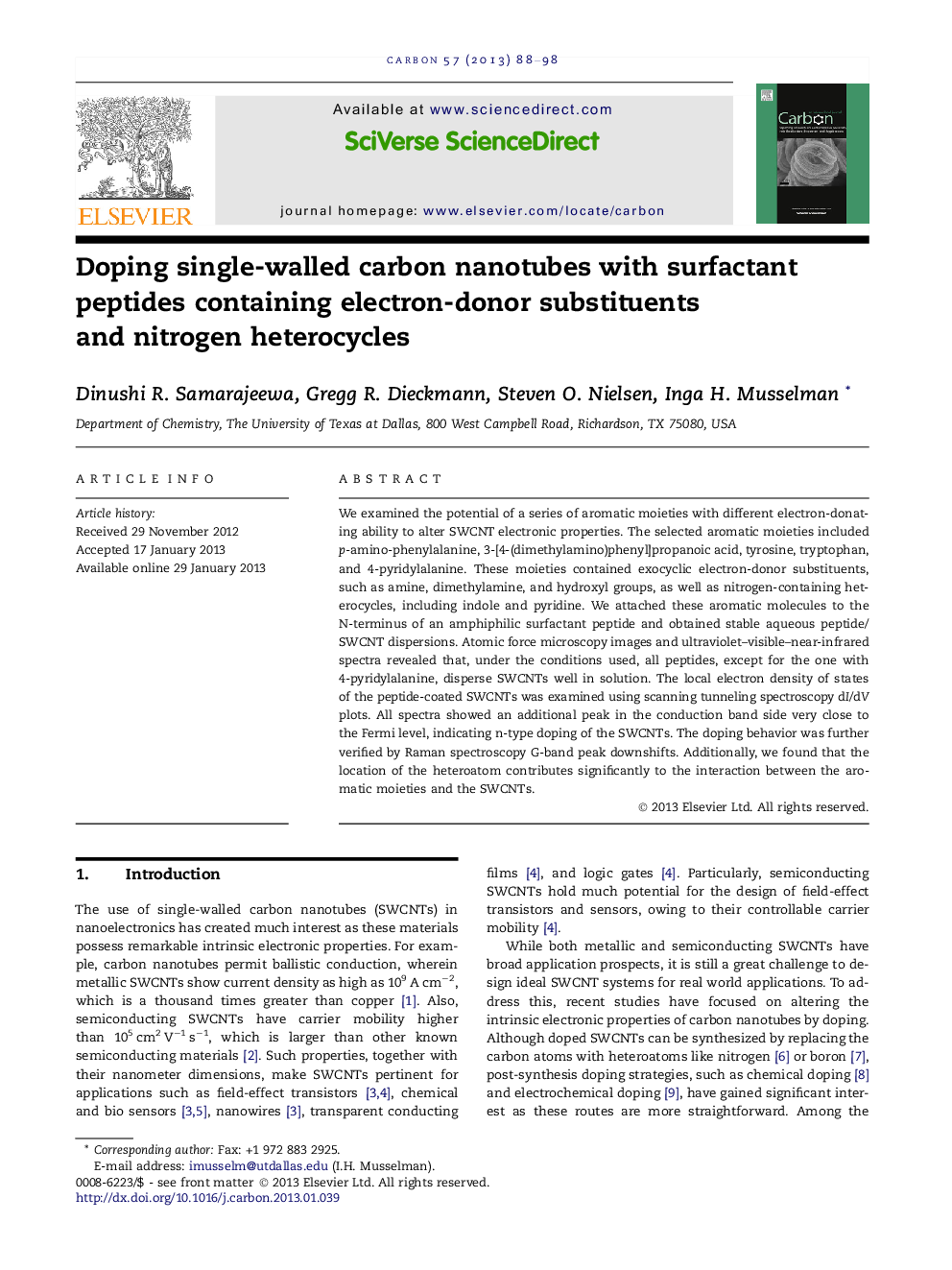| Article ID | Journal | Published Year | Pages | File Type |
|---|---|---|---|---|
| 7856810 | Carbon | 2013 | 11 Pages |
Abstract
We examined the potential of a series of aromatic moieties with different electron-donating ability to alter SWCNT electronic properties. The selected aromatic moieties included p-amino-phenylalanine, 3-[4-(dimethylamino)phenyl]propanoic acid, tyrosine, tryptophan, and 4-pyridylalanine. These moieties contained exocyclic electron-donor substituents, such as amine, dimethylamine, and hydroxyl groups, as well as nitrogen-containing heterocycles, including indole and pyridine. We attached these aromatic molecules to the N-terminus of an amphiphilic surfactant peptide and obtained stable aqueous peptide/SWCNT dispersions. Atomic force microscopy images and ultraviolet-visible-near-infrared spectra revealed that, under the conditions used, all peptides, except for the one with 4-pyridylalanine, disperse SWCNTs well in solution. The local electron density of states of the peptide-coated SWCNTs was examined using scanning tunneling spectroscopy dI/dV plots. All spectra showed an additional peak in the conduction band side very close to the Fermi level, indicating n-type doping of the SWCNTs. The doping behavior was further verified by Raman spectroscopy G-band peak downshifts. Additionally, we found that the location of the heteroatom contributes significantly to the interaction between the aromatic moieties and the SWCNTs.
Related Topics
Physical Sciences and Engineering
Energy
Energy (General)
Authors
Dinushi R. Samarajeewa, Gregg R. Dieckmann, Steven O. Nielsen, Inga H. Musselman,
